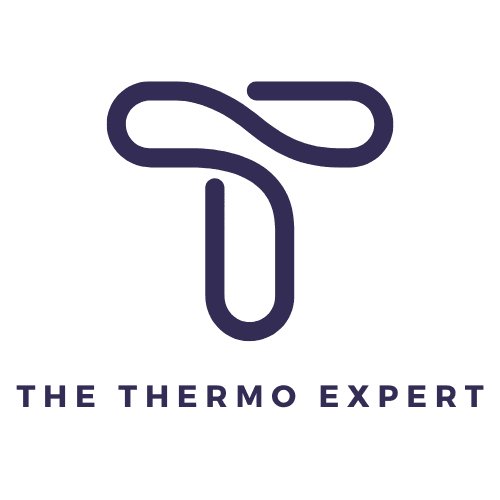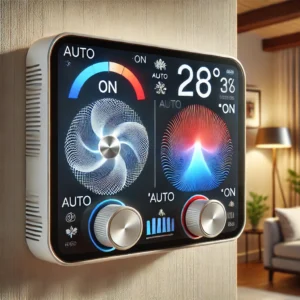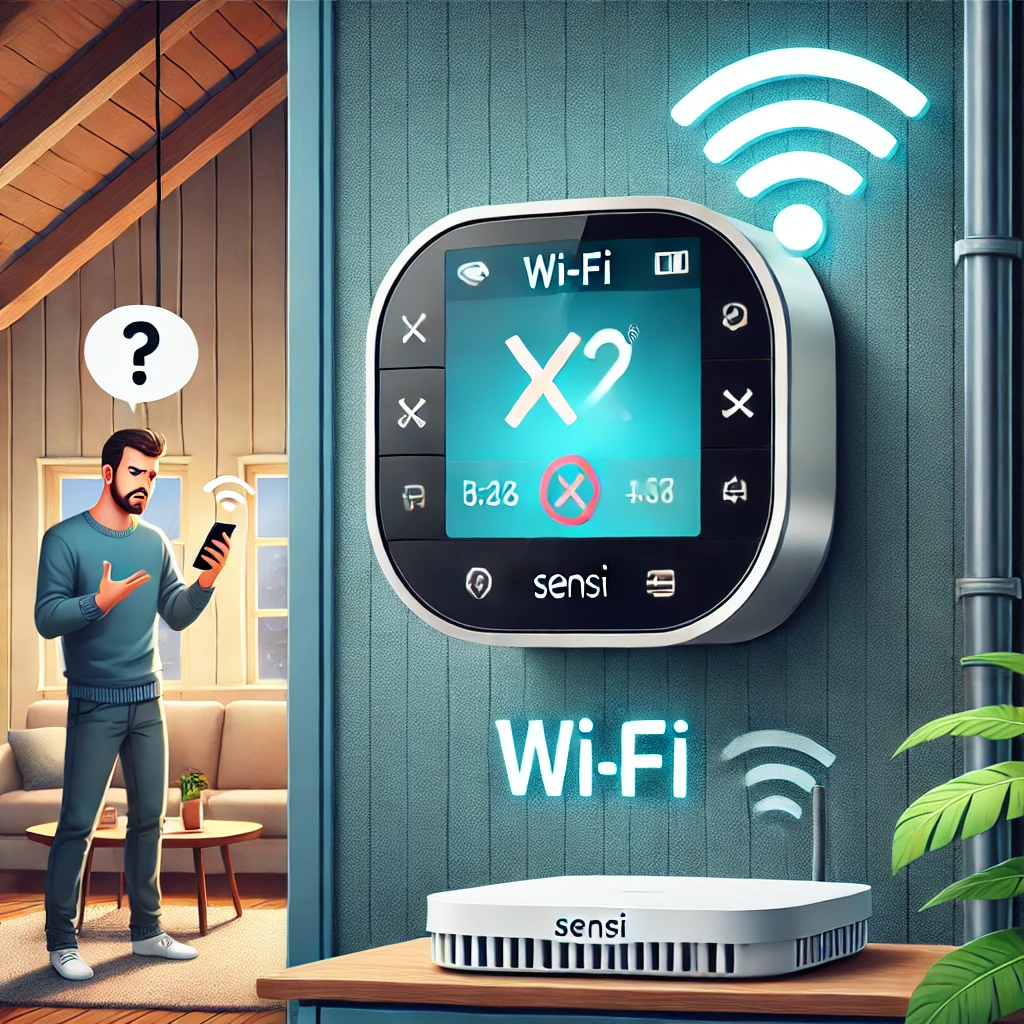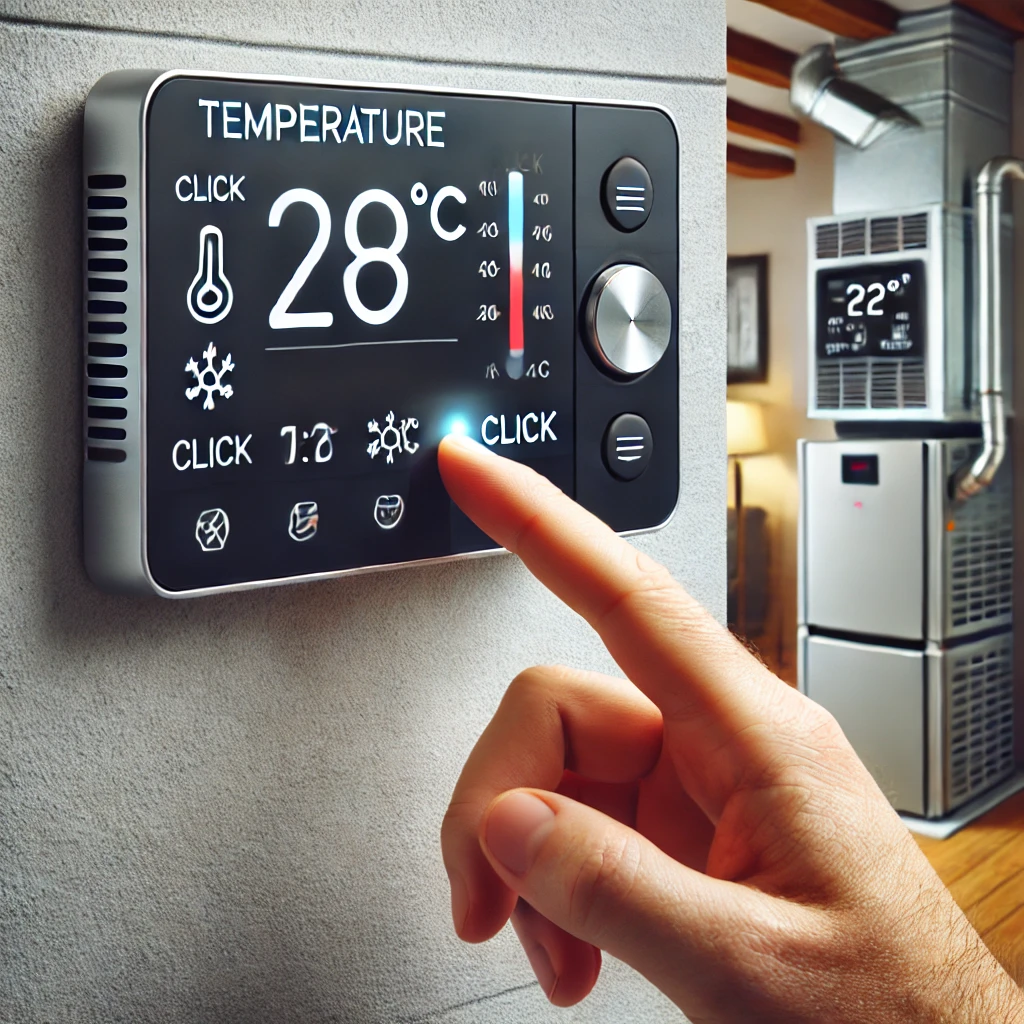Thermostat Fan: Auto vs. On – A Homeowner’s Guide to Saving Energy & Money
Have you ever glanced at your thermostat, seen the fan setting switch, and wondered if it really matters? You’re not alone. That tiny switch, with its simple “Auto” and “On” options, holds a surprising amount of power over your home’s comfort, air quality, and most importantly, your monthly energy bill.
Many homeowners set it once and forget it, not realizing the significant financial and environmental impact of their choice. Leaving your HVAC fan running constantly can be like leaving a 500-watt light bulb on 24/7, silently adding hundreds of dollars to your yearly expenses. This comprehensive guide will demystify your thermostat’s fan settings, break down the real costs, and empower you to make the smartest choice for your home and your wallet.
The Unsung Hero of Your Home: Understanding the HVAC Fan
Before we dive into the “Auto vs. On” debate, let’s appreciate what your thermostat fan—more accurately called the blower or air handler—actually does. It’s the heart of your home’s circulatory system for air.
When your furnace generates heat or your air conditioner produces cool air, that conditioned air doesn’t magically float into every room. The blower is a powerful fan, typically located inside your furnace or a dedicated air handler unit, that forces this air through your home’s ductwork and out of the vents. Without it, the heating and cooling would be trapped in one place, rendering your HVAC system useless.
Key Takeaway: The thermostat fan setting doesn’t control a small fan in the thermostat itself. It controls the main blower for your entire HVAC system, which is responsible for circulating all the heated or cooled air throughout your house.
The Big Debate: Fan “Auto” vs. “On” Mode Explained
This is the core of the issue. While both settings result in air circulation, they operate on fundamentally different principles.
What is “Auto” Mode?
In “Auto” mode, the blower fan operates in sync with your heating or cooling cycles. When the thermostat calls for heat or AC, the system and the fan turn on together. Once the desired temperature is reached, both the heating/cooling unit and the fan shut off. The fan will only run again when the next cycle begins. This is the default and most common setting for a reason.
What is “On” Mode?
In “On” mode, the blower fan runs continuously, 24 hours a day, 7 days a week, regardless of whether your furnace or air conditioner is active. It is constantly circulating air through your home, even when the temperature is stable. Think of it as putting the air circulation on a manual override that never stops.
| Feature | “Auto” Mode | “On” Mode |
|---|---|---|
| Energy Consumption | ✓ Significantly Lower | ✗ Much Higher (2-3x) |
| Air Circulation | ✗ Intermittent | ✓ Continuous |
| Air Filtration | ✗ Only during cycles | ✓ Continuous filtration |
| Temperature Evenness | ✗ Can lead to hot/cold spots | ✓ More consistent temperature |
| Blower Motor Wear | ✓ Less wear and tear | ✗ Increased wear and tear |
| Filter Lifespan | ✓ Lasts longer | ✗ Clogs up faster |
| Best For | Energy savings and general use. | Allergy sufferers and homes with poor circulation. |
The Million-Dollar Question: How Much Power Does a Thermostat Fan Use?
The energy consumption of an HVAC blower isn’t trivial. The exact wattage depends heavily on the type, size, and age of your system. Here’s a general breakdown:
- Standard PSC Motors: Permanent Split Capacitor (PSC) motors are the older, less efficient standard. They often run at a single speed and can consume between 500 to 800 watts.
- High-Efficiency ECMs: Electrically Commutated Motors (ECMs) are the modern, energy-efficient standard. These are variable-speed motors that use significantly less power, often only 200 to 300 watts, and can ramp their speed up or down as needed. According to the U.S. Department of Energy, an ECM can use up to 50% less electricity than a PSC motor.
Let’s Calculate the Real-World Cost
To understand the financial impact, let’s run the numbers. We’ll use a standard 500-watt PSC motor and the U.S. average electricity rate of approximately $0.17 per kilowatt-hour (kWh).
DIY Cost Calculator
You can estimate your own costs using this simple formula:
Scenario 1: “Auto” Mode (Runs ~8 hours/day on average)
- Daily Cost: (500W / 1000) * 8 hours * $0.17/kWh = $0.68 per day
- Monthly Cost: $0.68 * 30 days = $20.40 per month
- Yearly Cost: $20.40 * 12 months = $244.80 per year
Scenario 2: “On” Mode (Runs 24 hours/day)
- Daily Cost: (500W / 1000) * 24 hours * $0.17/kWh = $2.04 per day
- Monthly Cost: $2.04 * 30 days = $61.20 per month
- Yearly Cost: $61.20 * 12 months = $734.40 per year
The Shocking Difference: By simply switching from “On” to “Auto,” a homeowner in this scenario could save approximately $41 per month or a staggering $489 per year! That’s enough to pay for a new smart thermostat several times over.
Beyond Cost: Hidden Benefits and Drawbacks of Each Setting
Money isn’t the only factor. Your choice impacts your home’s environment in several ways.
Air Quality & Allergies
Advantage: “On” Mode. If you or a family member suffers from allergies, asthma, or general sensitivity to dust, the “On” setting can be a game-changer. By constantly circulating air, it continuously pulls particles like dust, pollen, and pet dander through your HVAC filter. This can lead to noticeably cleaner air. However, this comes at the cost of changing your air filters much more frequently—perhaps every month instead of every three months.
Home Comfort & Even Temperatures
Advantage: “On” Mode. Do you have that one room that’s always hotter or colder than the rest of the house? This is often due to poor air stratification. Since heat rises, upper floors can become stuffy while basements remain chilly. Running the fan on “On” constantly mixes the air, helping to balance the temperature throughout your home and eliminating those annoying hot and cold spots.
Humidity Control (A Surprising Twist!)
Advantage: “Auto” Mode (in Summer). This is a crucial, often overlooked detail. During a cooling cycle, moisture from your home’s air condenses on the cold indoor evaporator coil and drips away. When the AC cycle ends and the fan stays on (“On” mode), it can re-evaporate some of that collected moisture and blow it right back into your home, making it feel more humid. In “Auto” mode, the fan shuts off, allowing the moisture to drain properly.
Smart Upgrades to Optimize Comfort and Efficiency
You can get the best of both worlds by investing in modern technology. Here are some products that can make a huge difference.

Amazon Smart Thermostat
An incredibly affordable entry into smart home climate control. It works with Alexa to learn your habits and can automatically adjust for savings. It requires a C-wire for power.
Check Price on Amazon
ecobee Smart Thermostat Premium
The gold standard. It comes with a remote room sensor to help eliminate hot/cold spots and has advanced fan control settings, including a “Circulate” mode that runs the fan for a set number of minutes each hour.
Check Price on Amazon
Filtrete MPR 1900 Air Filters
A high-quality air filter is crucial. This Filtrete model captures fine particles like smoke, cough/sneeze debris, bacteria, and viruses without overly restricting airflow, which keeps your fan running efficiently.
Check Price on AmazonFrequently Asked Questions (FAQ)
Is it better to leave the fan on “Auto” or “On”?
For over 90% of homeowners, “Auto” is the better setting. It provides the best balance of comfort and energy efficiency, saving you a significant amount of money on electricity and reducing wear on your HVAC system.
Can running the fan on “On” damage my HVAC system?
It won’t cause immediate damage, but it will accelerate wear and tear on the blower motor and its components simply due to constant use. This could lead to earlier-than-expected repairs or replacement. If you notice odd behavior, like your thermostat clicking but not turning on, it’s a sign that professional inspection is needed.
What is the “Circulate” setting on some thermostats?
“Circulate” is a hybrid option found on many smart thermostats. It’s an excellent compromise. Instead of running 24/7, it runs the fan for a predetermined period (e.g., 10-15 minutes) every hour to mix the air, providing better temperature balance and filtration without the massive energy cost of the full “On” mode.
How often should I change my air filter in each mode?
In “Auto” mode, a standard 1-inch filter should be changed every 60-90 days. In “On” mode”, you’re moving three times as much air through the filter, so you should check it and likely replace it every 30 days to prevent restricted airflow, which makes your fan work harder.
Will a smart thermostat automatically manage my fan for me?
Yes, many smart thermostats like the ecobee have advanced algorithms and settings (like the “Circulate” feature mentioned above) that intelligently manage fan runtime. However, even smart devices can run into issues. If you find your Sensi thermostat not working correctly, for example, it may require specific troubleshooting steps.
Is a home thermostat the same as a car thermostat?
No, they serve very different purposes. A home thermostat regulates the temperature of the air in your living space. In contrast, a car thermostat, often discussed in terms of a 180 vs. 195 thermostat, regulates the engine’s coolant temperature to ensure it operates efficiently. They are not interchangeable.
Conclusion: The Smart Choice for Your Home
That small fan switch on your thermostat is far more powerful than it appears. While the temptation to use “On” for better air circulation and even temperatures is understandable, the financial and mechanical costs are substantial.
For the vast majority of U.S. households, the verdict is clear: set your fan to “Auto.” You’ll save hundreds of dollars a year, extend the life of your HVAC system, and reduce your home’s carbon footprint. If you struggle with allergies or temperature imbalances, consider a smart thermostat with a “Circulate” feature as a cost-effective compromise before committing to the energy-intensive “On” setting.
Go ahead, walk over to your thermostat right now. That simple flick of a switch is one of the easiest and most effective ways to save money today.




